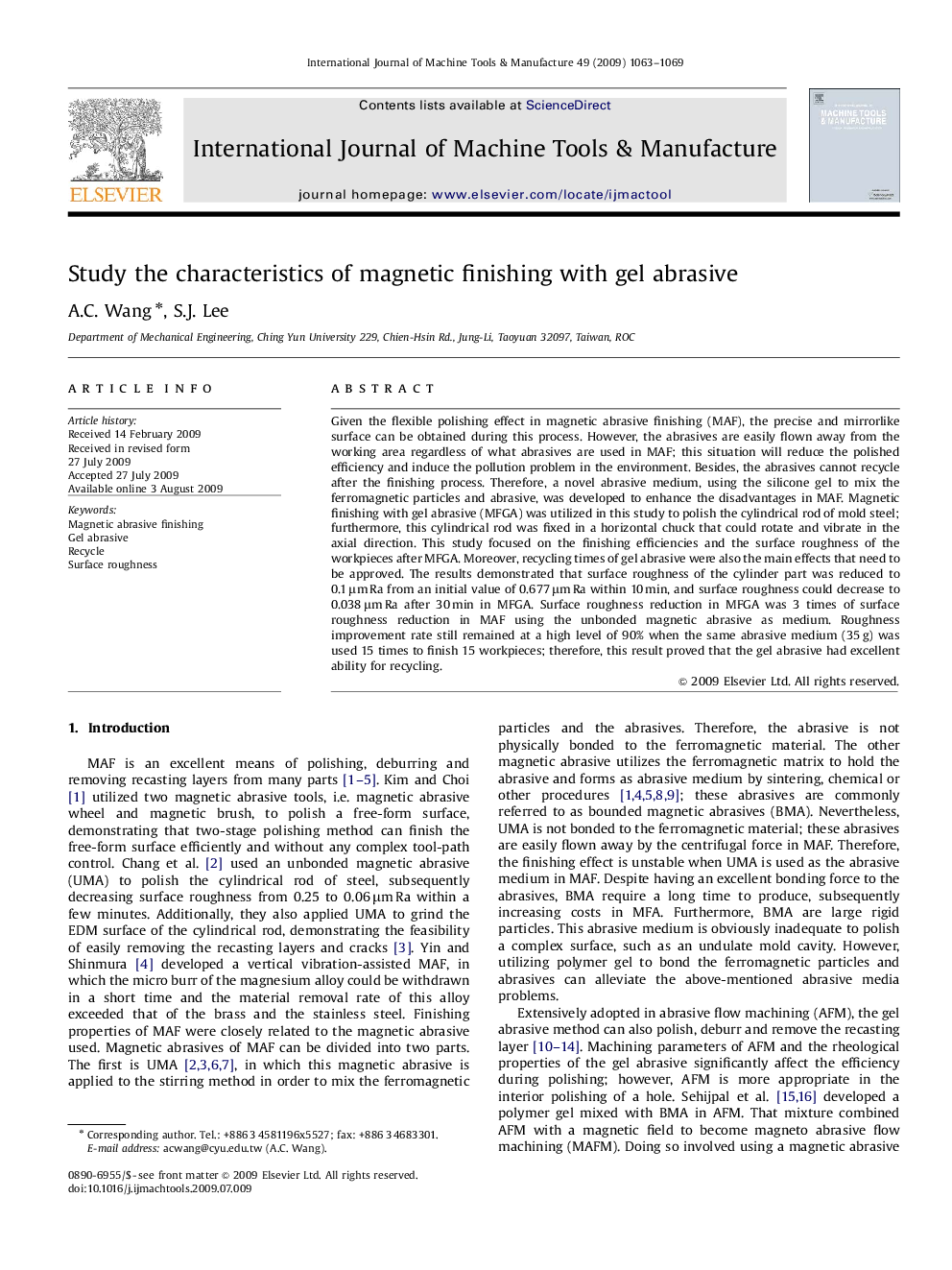| کد مقاله | کد نشریه | سال انتشار | مقاله انگلیسی | نسخه تمام متن |
|---|---|---|---|---|
| 780805 | 1464562 | 2009 | 7 صفحه PDF | دانلود رایگان |

Given the flexible polishing effect in magnetic abrasive finishing (MAF), the precise and mirrorlike surface can be obtained during this process. However, the abrasives are easily flown away from the working area regardless of what abrasives are used in MAF; this situation will reduce the polished efficiency and induce the pollution problem in the environment. Besides, the abrasives cannot recycle after the finishing process. Therefore, a novel abrasive medium, using the silicone gel to mix the ferromagnetic particles and abrasive, was developed to enhance the disadvantages in MAF. Magnetic finishing with gel abrasive (MFGA) was utilized in this study to polish the cylindrical rod of mold steel; furthermore, this cylindrical rod was fixed in a horizontal chuck that could rotate and vibrate in the axial direction. This study focused on the finishing efficiencies and the surface roughness of the workpieces after MFGA. Moreover, recycling times of gel abrasive were also the main effects that need to be approved. The results demonstrated that surface roughness of the cylinder part was reduced to 0.1 μm Ra from an initial value of 0.677 μm Ra within 10 min, and surface roughness could decrease to 0.038 μm Ra after 30 min in MFGA. Surface roughness reduction in MFGA was 3 times of surface roughness reduction in MAF using the unbonded magnetic abrasive as medium. Roughness improvement rate still remained at a high level of 90% when the same abrasive medium (35 g) was used 15 times to finish 15 workpieces; therefore, this result proved that the gel abrasive had excellent ability for recycling.
Journal: International Journal of Machine Tools and Manufacture - Volume 49, Issue 14, November 2009, Pages 1063–1069